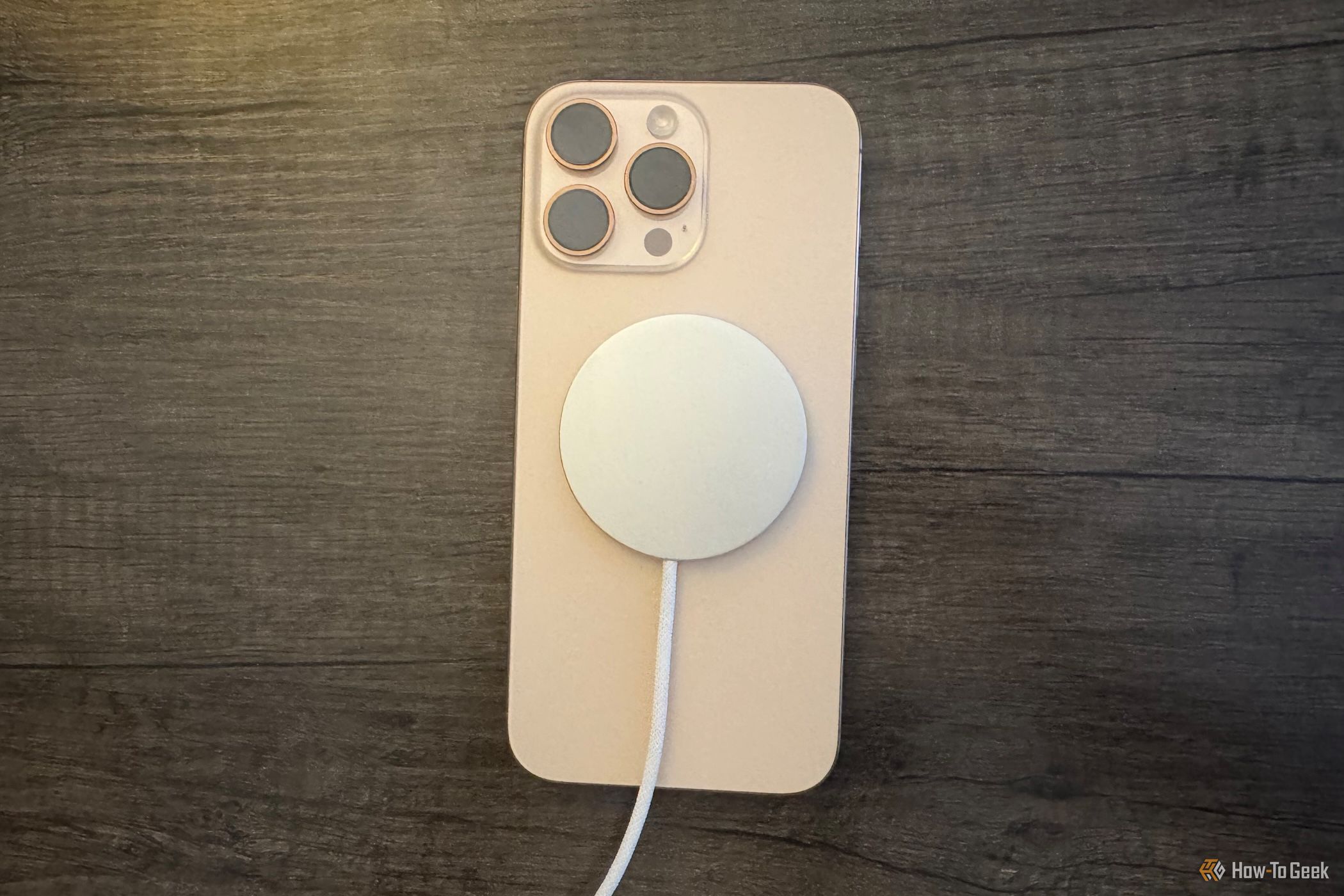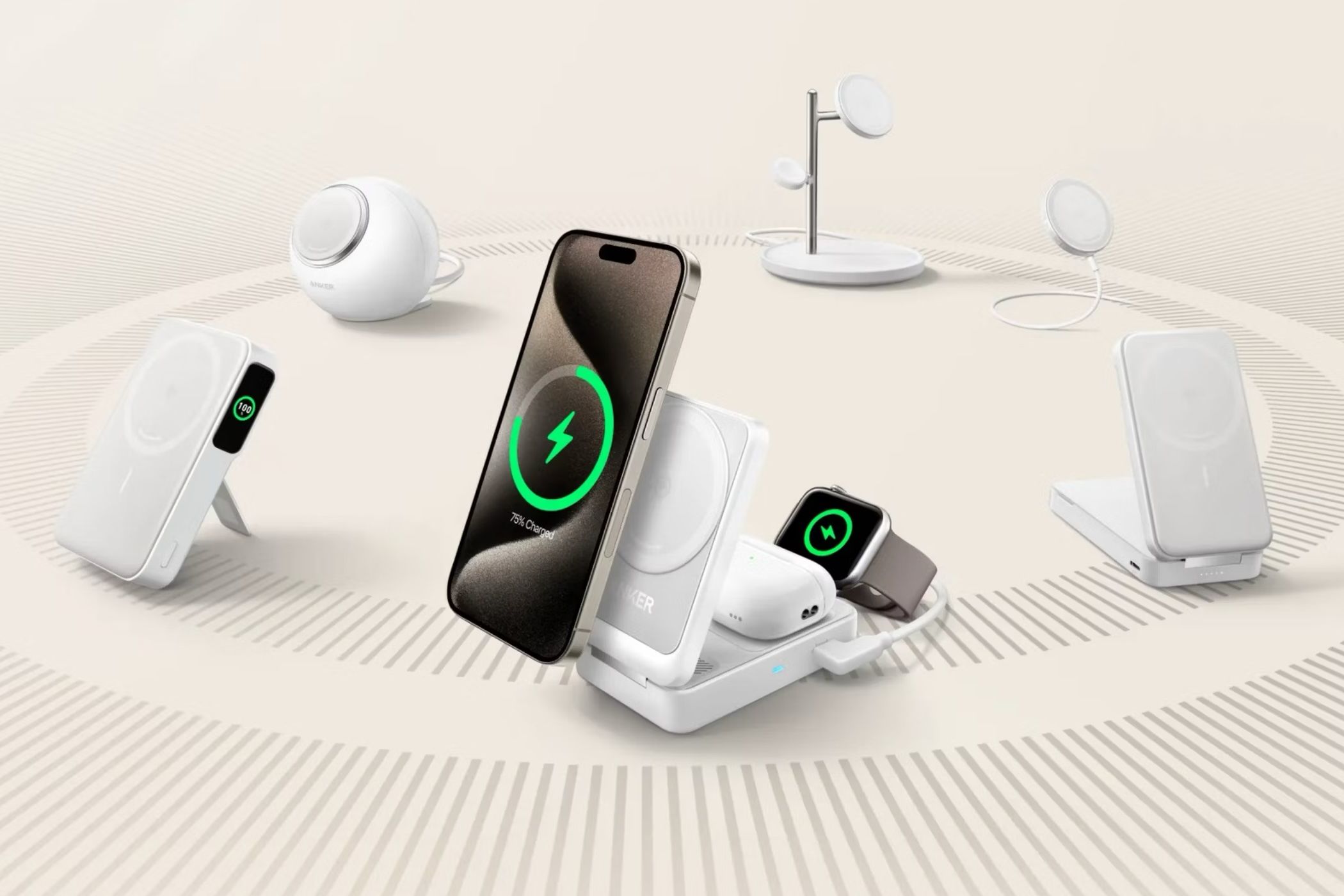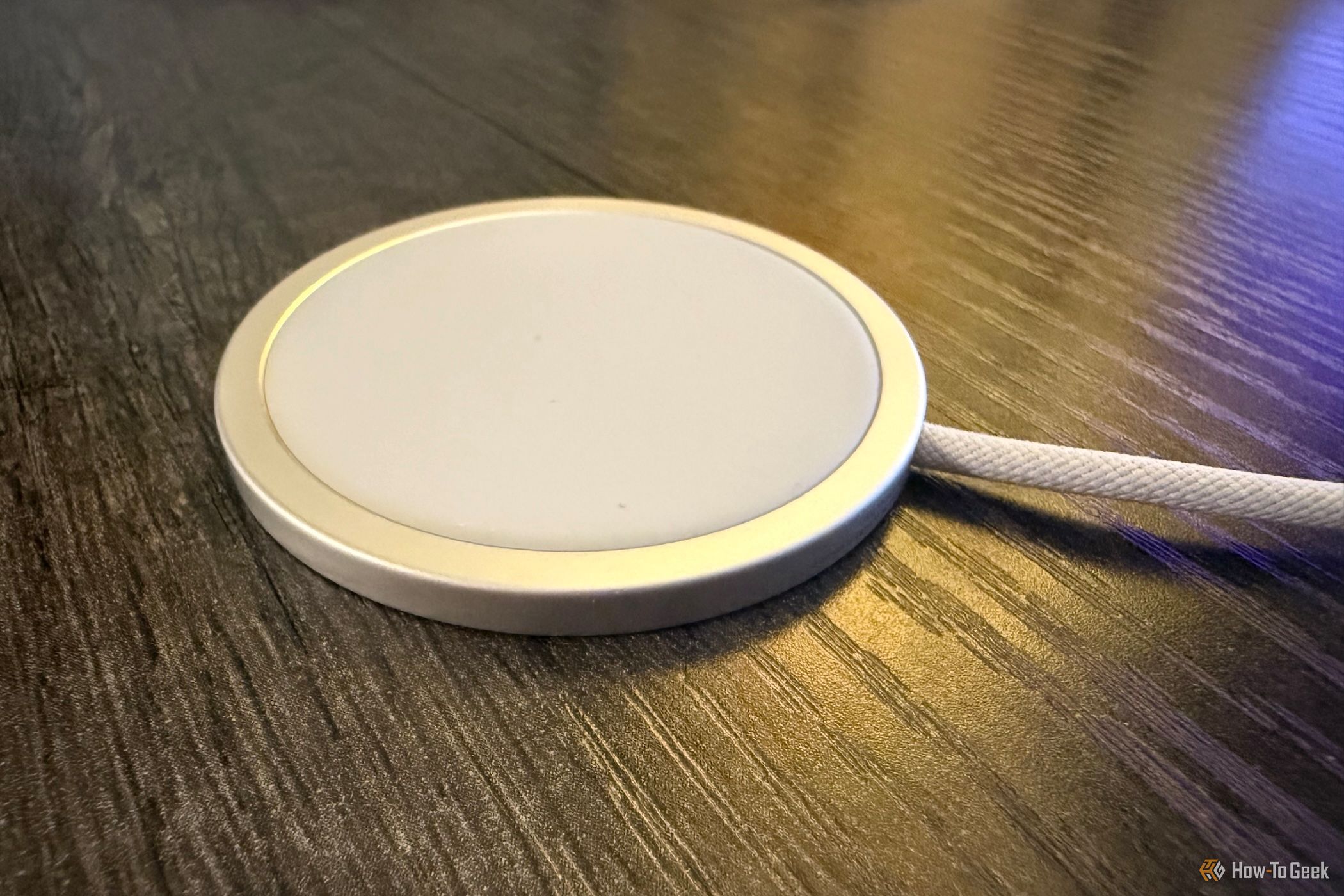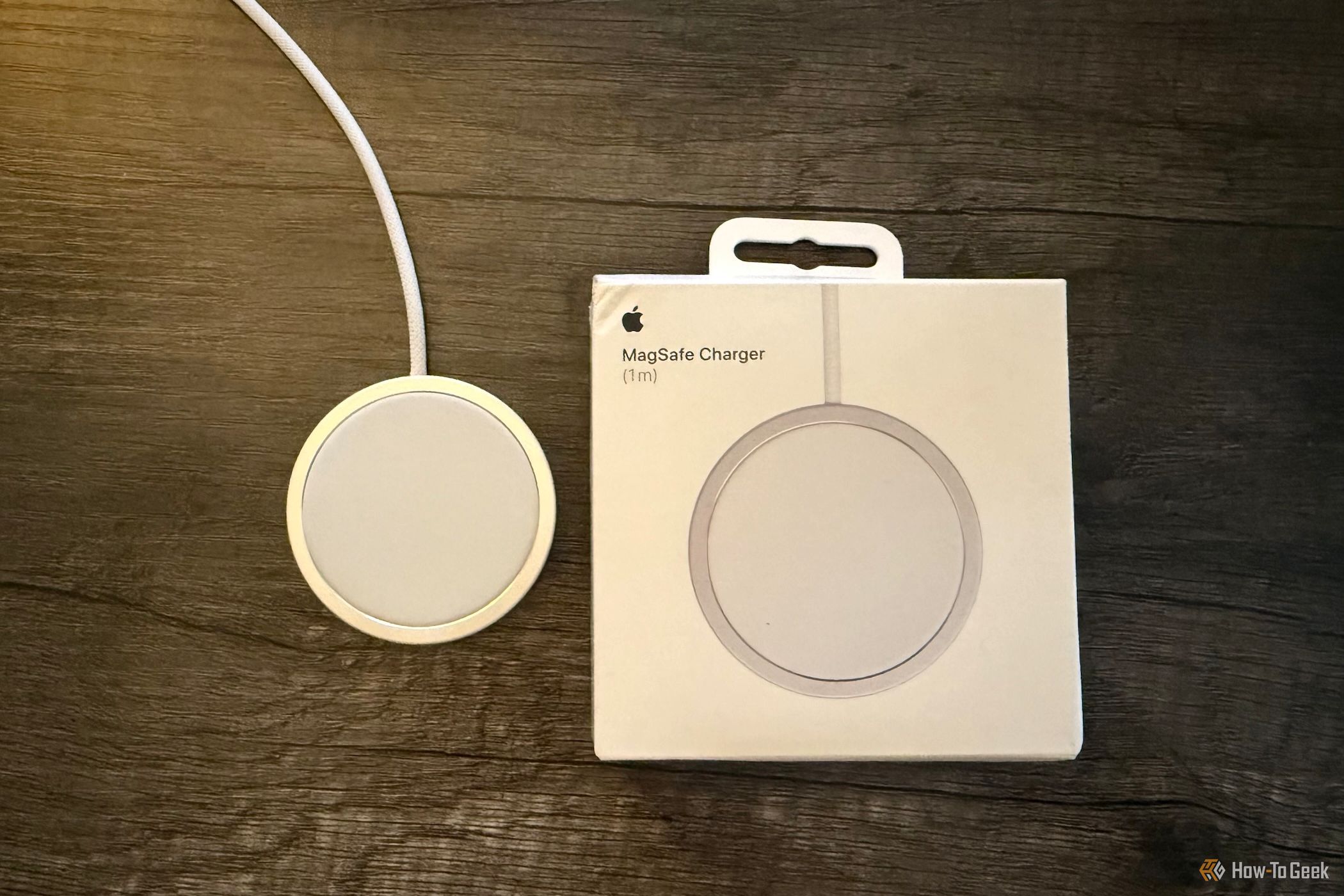Key Takeaways
- Apple’s iPhone 16 supports 25W wireless charging with the new MagSafe Charger, but real-world results fall short of the advertised speed.
- While Apple’s 25W charger offers faster speeds than older versions, design flaws persist in the updated MagSafe Charger model.
- iPhone 16 owners with a 30W+ adapter can benefit from the faster charging rate offered by the Apple MagSafe Charger, but it may be costly for those without one.
An understated new feature Apple included in the iPhone 16 is its 25W wireless charging capability, the fastest available in any smartphone yet. In tandem, the company updated its MagSafe Charger (2024) to support this, giving us a chance to test if the advertised charging speeds are the real deal.
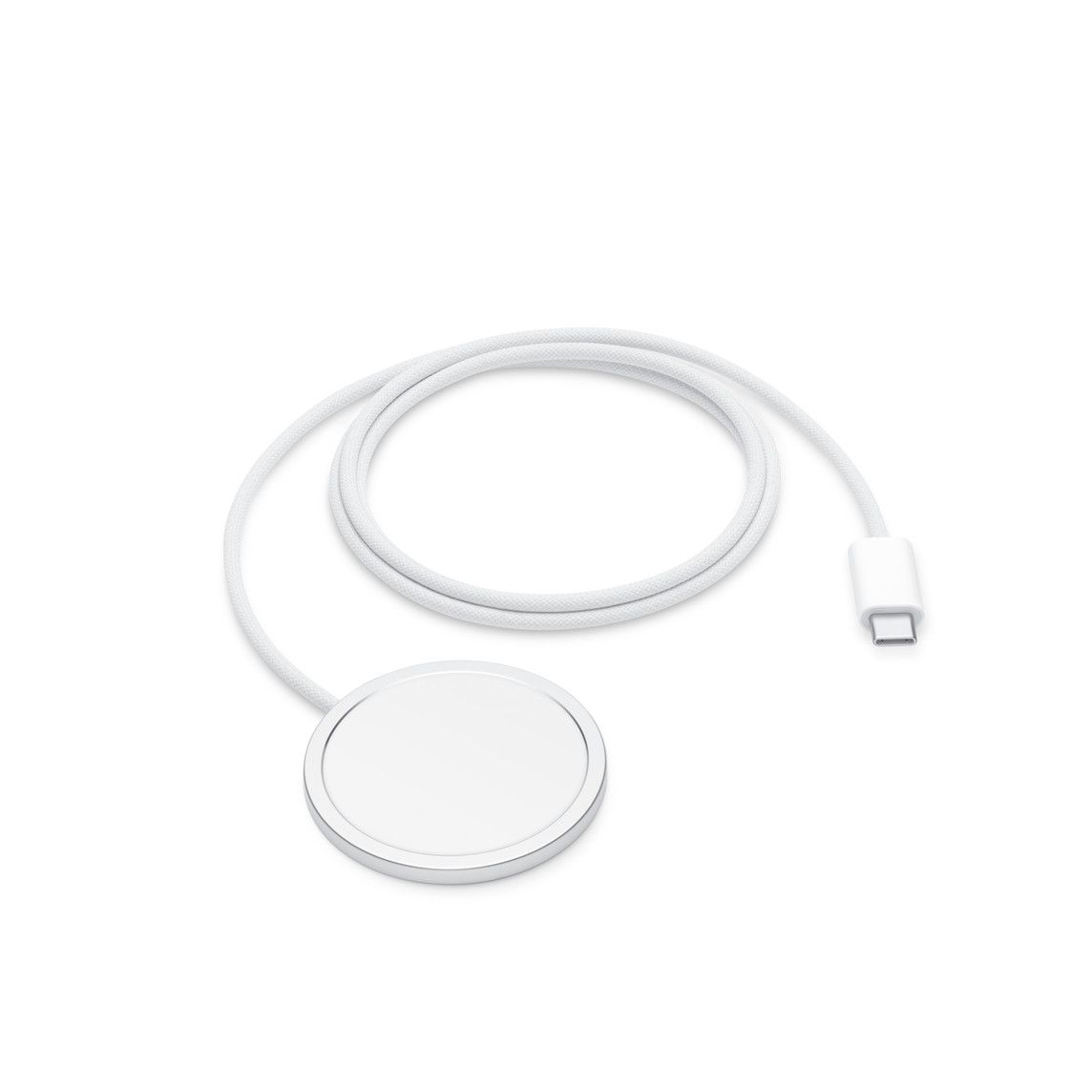

Apple MagSafe Charger (2024)
$33 $39 Save $6
Apple’s updated MagSafe charger that provides 25W wireless charging to the iPhone 16 line.
- Faster iPhone 16 wireless charging
- Portable design
- Can also charge AirPods
- Charging speeds are slower than Apple advertised
- Requires an expensive power adapter
- A few design flaws
Price and Availability
The Apple Magsafe Charger (2024) is available with a 1-meter cord for $39.00 or a 2-meter cord for $49.00. The box solely includes the magnetic charging puck, so you’ll need to provide your own power adapter (Apple will sell you one for another $39.00).
Expectations Versus Reality: Testing 25W Wireless Charging on iPhone 16
Apple set high expectations for iPhone 16 wireless charging when it touted on the phone’s web page that it’s capable of “up to 25W with a 30W power adapter or higher, enabling up to 50% charge in around 30 minutes.” After testing this feature with the updated MagSafe Charger, it turns out that “up to” is doing more than its fair share of heavy lifting.
It’s worth noting that Apple came to these numbers using its 30W charger, something I didn’t have on hand for this review. However, it’s marketing speak to say you need any specific brand’s adapter for these speeds: if an adapter outputs 30W or more, you should be set.
The two adapters I used for testing were Anker’s 735 Charger (65W) and a 2023 MacBook Pro adapter (140W). I plugged these directly into power outlets and didn’t touch the phone during the test. I also didn’t have any other devices plugged into Anker’s charger, which changed the output wattage of its ports.
After 30 minutes of charging, my results were as follows: 29% recovered battery life with the Anker 735 and 26% recovered battery life with the MacBook Pro adapter. These results are enough below Apple’s claims to lead me to conclude that using the company’s 25W MagSafe adapter, the average consumer will not get close to 50% charge in 30 minutes, though perhaps you may get there in roughly 45 minutes.
How Does It Compare to 15W MagSafe/Qi2 Chargers?
I also tested the two official 15W MagSafe charging stations with the iPhone 16 Pro Max under the same conditions: directly plugged into a power outlet with no other devices being charged and without using the phone mid-test. I tested the Belkin BoostCharge Pro 3-in-1 Wireless Charger and the Anker 3-in-1 Cube, which resulted in 15% and 17% recovered battery life, respectively.
This shows that while Apple’s claims about 25W wireless charging don’t match our results, the new MagSafe puck offers nearly twice the charging speed of its previous iteration. This is a considerable upgrade for anyone who likes wireless charging but wants faster speeds, and with expectations in check, I think that person would be satisfied with what Apple’s offering.
It’s also worth noting that any iPhone that supports wireless charging prior to the iPhone 16 will charge at its maximum wattage with this puck. That is, it’ll function identically to other 15W MagSafe and Qi2 chargers on the market. Further, it will also charge your AirPods just as past iterations did.
Portable Design That Retains Flaws
The 2024 MagSafe Charger refresh retains the same design as its predecessor. This puck-shaped device magnetically attaches to the back of your iPhone, including MagSafe-compatible cases. It’s ultra-light, so it doesn’t add weight to the phone or a backpack.
There are some design flaws that I wish Apple would have fixed by now. First, there’s no reinforcement at the connection point between the puck and the cord, which leaves it vulnerable to wear and tear. Also, the metal ring surrounding the soft charging pad causes metal-on-metal contact when removed from the phone, resulting in an unsettling scratching sound. These continued issues are strange given the attention to finer details that typically help justify Apple’s premium prices.
Should You Buy the Apple MagSafe Charger (2024)?
At present, third-party manufacturers have yet to announce 25W chargers, so the 2024 Apple MagSafe Charger is your only option for faster wireless charging. Even if it doesn’t live up to the company’s promises, it’s still a marked improvement at near-double the charging rate. Any iPhone 16 owner who needs this functionality and owns a 30W or higher adapter will find what they’re looking for here. If you don’t own an adapter, this becomes prohibitively expensive.
If your wireless charging needs also include AirPods and/or an Apple Watch, I’d recommend waiting for third parties to offer 2-in-1 and 3-in-1 solutions. The next iteration of those product lines is sure to include 25W iPhone 16 charging (and for a more affordable price).
Want to know what to look for when buying a wireless charger? Give my checklist a look here.


Apple MagSafe Charger (2024)
$33 $39 Save $6
Apple’s updated MagSafe charger that provides 25W wireless charging to the iPhone 16 line.


